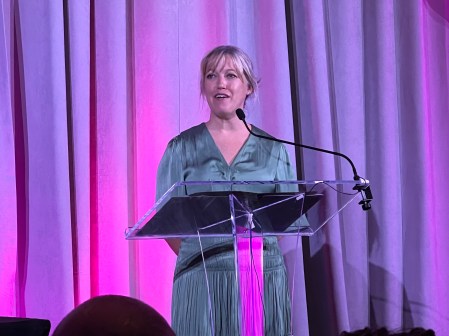Seeing the citizen as a customer: Implementing a customer-first mindset in government

Improving citizen experience has been a focus of the federal government for the past several administrations, but it was only recently that the government began talking about “customer” experience.
Traditionally the government has not necessarily associated “customers” as citizens. But, today’s focus on the “customer” of government promises to prioritize the citizen experience in navigating government services as opposed to just delivering services that check the box on paper.
The President’s Management Agenda (PMA) has a key focus area of “Delivering Excellent, Equitable, and Secure Federal Services and Customer Experience.” This was followed by the Executive Order (CX EO) on “Putting the Public First: Improving Customer Experience and Service Delivery for the American People.” This is more than a semantic change. This shift to “customer” allows for guidance to incorporate the experience that the federal workforce has with government technology and services. There is a direct correlation between employee experience and customer experience — happy employees deliver better service. A holistic look at how technology is used by all stakeholders is critical to achieving modernization and digitization goals.
Unlike implementing the guidance of cybersecurity mandates, delivering on the customer service goals does not require a huge financial investment. It does, however, mean making a more meaningful investment in culture change.
Agencies have the tools they need to improve customer experience, they just need to apply them in different ways.
Continuous Feedback
Some form of customer feedback is included in most projects today, but typically it is found in the very beginning stages of research and development. In keeping with the more iterative development of today’s IT solutions, user feedback needs to happen both early AND often.
Recently, an Army program came under scrutiny for not outlining how they would measure and assess soldier feedback to ensure the end-solution was actually meeting soldier standards. The Integrated Visual Augmentation System (IVAS) is the Army’s project to put navigation, intelligence, situational awareness and advanced target acquisition into the viewfinder of soldiers in the close fight. The Army argues they did user surveys and gathered input on designs, but a report from the Pentagon Inspector General says that does not go far enough to ensure the success of this $21B billion program.
This example has a well-defined user group and still faces questions as to if they did enough to understand their audience. For most agencies, their “customer” is much less homogeneous. How do you design for a customer when your customer is actually every United States citizen? Human-centered design approaches can make this seemingly impossible task possible by involving the human perspective in all steps of the problem-solving process. This means gathering users and those closest to the users together frequently to review the solution. This contrasts with today’s game of telephone where requirements managers are far removed from the actual users.
Get Beyond the Survey
Surveying users is incredibly important, but it is not the only way to implement human-centered design. In fact, after two years of incredible change in the workplace, many people are suffering from survey fatigue after having to answer questions about work-from-home needs, new policies and procedures, return to workplace readiness, and more. It is harder than ever to motivate respondents to focus on surveys. Additionally, in government, with the sheer audience size, it can take months to get the survey out and then analyzed. Then teams must ensure they have the budget and contract flexibility to make the changes that respondents might suggest. This works against the general premise of continuous feedback.
Instead, teams need to start fielding proof of concept solutions and minimally viable products sooner and more often. Then they must analyze the usage of those solutions to make real-time adjustments that will make an immediate impact on adoption. For example, a solution for expense reports may be resulting in those reports getting filed and paid — but looking at usage stats you may find it is taking a user four hours to get that process completed. Technically, the solution is working in accomplishing the overall task, but it is not efficient and adds to the “time tax” that the CX EO is looking to minimize across all government services. This insight can be gained at any point in the development and deployment of solutions without having to directly involve users in the feedback loop. It is human-centered, without involving the human.
Start at the Very Beginning
A focus on customer experience via human-centered design must be built into the procurement process, especially RFPs. The end-user is frequently missing from the requirements listed in proposals. Contracts can be on schedule, on budget, and meet “performance” metrics on paper — all while still delivering nothing of value to an actual user. Usability is not a key metric or KPI, but it needs to be.
Contracts should have specific criteria around engaging users as well as early findings as to what users are looking for. Contractors should be measured against these criteria. Contracts should make it clear that ad hoc user touch points are not enough. The project needs to document how user feedback is being incorporated. Changing the requirements to incorporate human-centered design and continuous user feedback will change how contractors (and which contractors) bid on work and then ultimately carry it out.
Contracts should cite usability and adoption goals beyond initial rollout. An investment in technology takes years to show return on investment so ensuring it is still used in five or even ten years should be criteria for any solution. A long-term adoption strategy should be a part of a procurement evaluation to ensure more austere use of technology investments across changing administration and leadership.
Making the Change
The PMA and the CX EO give agencies “permission” to make these changes – to become more iterative in their design of solutions and to mandate user input at multiple steps. Now is the time to look at agency policies and processes and see where they conflict with customer service goals and make changes. It is also time to really look at and understand who your customers are. The VA has done a great job of defining the veteran experience they want people to have and identifying the barriers for specific populations. All agencies need to take a similar look at the experience they want citizens and employees to have and use that as the top-level guidance in defining requirements for new solutions and services. These should be the milestones contracts are measured against, not the current focus on hitting per-year spending numbers and total contract years.
Making the shift to a customer experience focus will not be easy, but with executive mandates pushing for this direction, change will be easier to start. Starting with how we define the project and moving on to how we measure progress and success, the government can improve its user experience across its wide range of customers.
Riya Patel is managing director for Government at Dcode, a Washington, D.C., accelerator established to help nontraditional tech startups do business with government. Previously, Riya worked at the Defense Innovation Board, Office of the Under Secretary of Defense for Acquisition and Sustainment, and within the Intelligence Community, and she earned her degree from Tufts University in international security and Russian language.
Billy Biggs currently leads the public sector team at WalkMe where he is responsible for sales leadership and operations for federal, state/local, higher education and non-profit customers. Previously, he held public sector leadership roles at BlackBerry, Cornerstone OnDemand, and GP Strategies Corporation.





